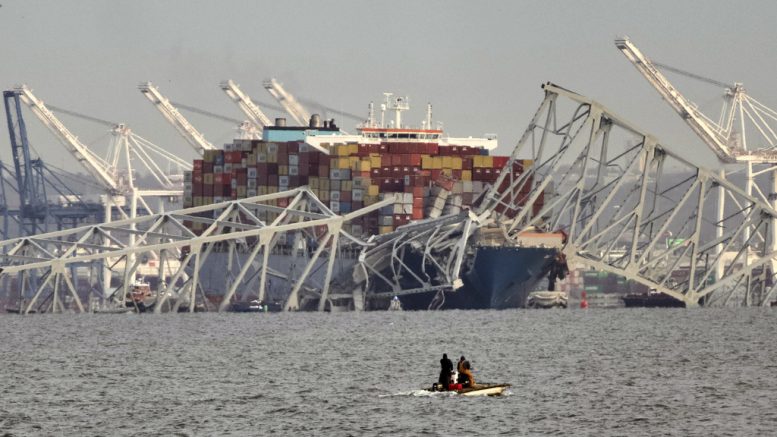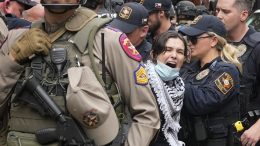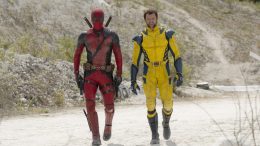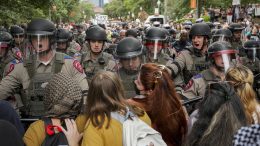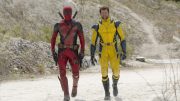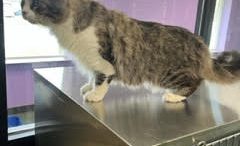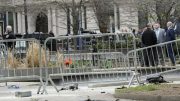BALTIMORE (AP) — A container ship rammed into a major bridge in Baltimore early Tuesday, causing it to snap and plunge into the river below. Several vehicles fell into the chilly waters, and rescuers searched for survivors.
It was also not clear what caused the cargo ship to crash into the Francis Scott Key Bridge long before the busy morning commute in what one official called a “developing mass casualty event” in a major American city just outside of Washington. Two people were rescued, and it was not clear how many more might be in the waters of the busy harbor near a key port.
The ship crashed into one of the bridge’s supports, causing the structure to break apart like a toy. It tumbled into the water in a matter of seconds — a shocking spectacle that was captured on video and posted on social media. The vessel caught fire, and thick, black smoke billowed out of it.
“Never would you think that you would see, physically see, the Key Bridge tumble down like that. It looked like something out of an action movie,” said Baltimore Mayor Brandon Scott, calling it “an unthinkable tragedy.”
Fire Chief James Wallace said authorities “may be looking for upwards of seven people” but said that number could change and other officials wouldn’t give figures. It was not clear if the two rescued were included in the seven cited by the fire chief.
Authorities said a crew of unknown size was working on the bridge at the time of the collapse and that sonar had detected cars in the water, which is about 50 feet (15 meters) deep. The water temperature was about 47 degrees Fahrenheit (8 degrees Celsius) before dawn Tuesday, according to a buoy that collects data for the National Oceanic and Atmospheric Administration.
Earlier, Kevin Cartwright, director of communications for the Baltimore Fire Department, told The Associated Press that several vehicles were on the bridge at the time of the collapse, including one the size of a tractor-trailer truck. The bridge came down in the middle of night when traffic would be lighter than during the day when thousands of cars traverse the span.
Cartwright called the collapse a “developing mass casualty event,” though he didn’t know at the time how many people were affected.
Synergy Marine Group — which owns and manages the ship, called the Dali — confirmed the vessel hit a pillar of the bridge at about 1:30 a.m. while in control of one or more pilots, who are local specialists who help navigate vessels safely into ports.
It said all crew members, including the two pilots on board, were accounted for and there were no reports of any injuries.
As the sun rose Tuesday, jagged remnants of the bridge were illuminated jutting up from the waters surface. The on-ramp ended abruptly where the span once began.
Cartwright said that some cargo appeared to be dangling from the bridge, which spans the Patapsco River at the entrance to a busy harbor. The river leads to the Port of Baltimore, a major hub for shipping on the East Coast. Opened in 1977, the bridge is named for the writer of “The Star-Spangled Banner.”
Maryland Transportation Secretary Paul Wiedefeld said all vessel traffic into and out of the port would be suspended until further notice, though the facility was still open to trucks.
Gov. Wes Moore declared a state of emergency and said he was working to get federal resources deployed. The FBI was on the scene, but said there was no credible information to suggest terrorism. President Joe Biden was briefed.
The Dali was headed from Baltimore to Colombo, Sri Lanka, and flying under a Singapore flag, according to data from Marine Traffic. The container ship is about 985 feet (300 meters) long and about 157 feet (48 meters) wide, according to the website.
Danish shipping giant Maersk said it had chartered the vessel, which was carrying its customers’ cargo. No Maersk crew and personnel were on board. The collapse caused Maersk share at the Nasdaq Copenhagen to plummet 2% in early Tuesday trading.
In 2001, a freight train carrying hazardous materials derailed in a tunnel in downtown Baltimore and caught fire, spewing black smoke into surrounding neighborhoods and forcing officials to temporarily close all major roads into the city.

